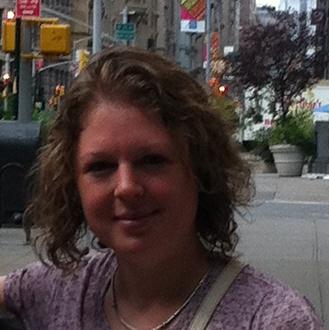Plenary Four
CrossRef developments and initiatives
CrossRef is an independent membership association, founded and directed by publishers. CrossRef’s mandate is to connect users to primary research content, by enabling publishers to work collectively. Many people know CrossRef as ‘the DOI people’ and this is CrossRef’s core service, providing publishers with consistent links to content using digital object identifiers (DOIs). Over the past number of years, CrossRef has started to provide a wider range of collaborative services for members including CrossCheck, CrossMark and FundRef. We are currently working on a text and data mining initiative and developing tools for publishers to be able to extract references from PDFs and deposit the resulting references with CrossRef. The plenary will give an update on existing CrossRef services and provide an insight into the new initiatives that people can expect to see in the next 12 months.
 Rachael Lammey has been with CrossRef since March 2012. She is a Product Manager on the CrossCheck and CrossMark initiatives and works on other CrossRef tools for publishers. She previously worked in journals publishing for Taylor & Francis for nearly six years, managing a team who worked with online submission and peer review systems. She has a degree in English Literature from St. Andrews University and a MA in Publishing Studies from the University of Stirling.
Rachael Lammey has been with CrossRef since March 2012. She is a Product Manager on the CrossCheck and CrossMark initiatives and works on other CrossRef tools for publishers. She previously worked in journals publishing for Taylor & Francis for nearly six years, managing a team who worked with online submission and peer review systems. She has a degree in English Literature from St. Andrews University and a MA in Publishing Studies from the University of Stirling.
****
Why editors should care about their journal websites
Journals have now been online for over a decade, and websites grow increasingly more complex and sophisticated. Users are also becoming more demanding, requiring improved search results and faster download speeds. They also expect functionality such as reference links and the ability to socially tag articles (even if they do not use them!). With the wealth of information being provided through search engines, how can editors ensure that when readers reach their sites they find what they want, in the form that they want it, and with the functionality they expect? How can editors use their websites to increase visibility and citations, and why is it important not to leave such developments entirely in the hands of publishers? This session will look at strategies to make best use of websites to increase the visibility of journals and articles, how website developers are responding to journal needs, and how editors and publishers can work with developers to ensure that the website delivers the content and builds trust in your articles.
Pippa Smart is a publishing consultant with over 25 years’ experience of working within the STM publishing industry. With extensive experience of journals publishing she now advises publishers (particularly non-commercial associations) in the development of their publishing programmes, and works with journal editors on development of their journals. She provides training in editorial strategies, copyright and ethics, and has developed courses for ALPSP, WIPO and EASE. She is the editor of the new edition of the EASE Science Editors’ Handbook and writes the monthly newsletter for publishers, the ALPSP Alert.
Christiaan Sterken is Research Director at the Belgian Fund for Scientific Research, and works at the Department of Physics and Astronomy at the University of Brussels where he teaches courses in observational astronomy and on the history of natural sciences. He also gives seminars on scientific writing. He is the Editor of The Journal of Astronomical Data, an Open Access online astronomical journal, and the author ofScientific Writing for Young Astronomers, a book for PhD students and young postdocs in physics and astronomy.